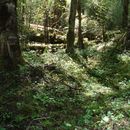pt-BR
nomes no trilho de navegação


Recent studies of mitochondral DNA support the hypothesis that Mustela itatsi and Mustela sibirica (once thought to be the same species) are actually two distinct species. This same study has also revealed that a population of M. sibirica that was indroduced to Japan from Korea may be going through a genetic bottleneck. (Naoko et al., 1998)
Perception Channels: tactile ; chemical
M. sibirica is on CITES Appendix III for populations in India.
US Migratory Bird Act: no special status
US Federal List: no special status
CITES: appendix iii
IUCN Red List of Threatened Species: least concern
See Reproduction.
Siberian weasels sometimes take domestic fowl.
As predators, these weasels perform an obvious function in controlling small rodent population. However, in recent years researchers have found the anal-gland secretions of M. sibirica cause rice-field rats (Rattus argentiventer) to go into self-anointing behavior. As a result, Siberian weasels are being introduced into agricultural areas to help control populations of these rats. (Xu, 1995; Zhongjian et al., 1995) They are also important in the fur trade (Nowak, 1999).
Positive Impacts: body parts are source of valuable material; controls pest population
Siberian weasels play an important role in controlling rodent and other small mammal populations in the ecosystems in which they live.
Siberian weasels, like many other members of the genus Mustela, are efficient and ferocious predators. They feed on rice-field rats (Rattus argentiventer) in the coastal areas of southern China. In parts of their range (Nakdong Estuary, Republic of Korea) Siberian weasels may feed on little terns (Sterna albifrons) and their eggs.
In the subtropical forests of Taiwan M. sibirica was found to feed on a variety of small mammals (shrews, rats, mice) and to switch to a more invertebrate diet (including beetles, grubs and other invertebrates) when small mammal populations were low.
They store prey for later consumption, especially for eating during the winter. In times of food shortages, they have been known to make mass migrations
(Xu et al., 1995; Soon-Bok et al., 1998; Wu, 1999; Nowak, 1999)
Animal Foods: birds; mammals; eggs; insects; terrestrial non-insect arthropods
Foraging Behavior: stores or caches food
Primary Diet: carnivore (Eats terrestrial vertebrates, Eats eggs, Insectivore , Eats non-insect arthropods)
Mustela sibirica can be found throughout eastern Asia, north to the Sea of Okhotsk, and south to Kwangtung in China. In the south they range west to the edge of Tibet and the Gobi Desert, and north of the Gobi extending to European Russia. They have also been introduced to many of the islands of Japan. (Xu et al.,1995; Honacki et al., 1982; Tate and Hamiliton, 1947)
Biogeographic Regions: palearctic (Native ); oriental (Introduced , Native )
In Taiwan, Siberian weasels are mainly found in secondary forests at elevations of 1400-1700m. Siberian weasels can also be found, in less abundance, in primary forest and coniferous plantations. The preferred terrain for this species varies from ridges with 13 degree slopes to areas near water with slopes up to 37 degrees. (Hai-Yin, 1999)
Range elevation: 1,400 to 1,700 m.
Habitat Regions: temperate
Terrestrial Biomes: tundra ; forest ; mountains
Other Habitat Features: agricultural
A study of wild populations in Japan showed that the average longevity of Siberian weasels was about 2.1 years. The oldest weasels were found to be between 5 and 6 years old. One captive M. sibirica lived to be 8 years and 10 months old. (Mayagi et al., 1983)
Range lifespan
Status: wild: 0 to 6 years.
Average lifespan
Status: wild: 2.1 years.
Range lifespan
Status: captivity: 9 (high) years.
Average lifespan
Status: wild: 2.1 years.
Average lifespan
Status: captivity: 8.8 years.
Mustela sibirica is pale brown on the back, gradually changing to a paler, yellowish brown below. The tip of the tail may be a darker shade of brown than the rest, but is not black. Siberian weasel males measure 280 to 390 mm in head and body length and 155 to 210 mm in tail length, they weigh from 650 to 820 grams. Females are slightly smaller, with a head and body length of 250 to 305 mm, tail length of 133 to 164 mm, and weighing 360 to 430 grams. Foot length measures from 6 to 7.2 cm.
Range mass: 360 to 820 g.
Range length: 250 to 390 mm.
Other Physical Features: endothermic ; homoiothermic; bilateral symmetry
Sexual Dimorphism: male larger
Siberian weasels, like their relatives, are capable of standing up to attackers that are larger than themselves. The primary predators of weasels are probably large raptors, such as owls and hawks.
Known Predators:
Males may fight over access to females during the breeding season (Nowak, 1999).
Mating System: polygynous
M. sibirica breeds yearly during the late winter and early spring. Several males may court a single female, and fights between males have been noted. (Nowak, 1999) The gestation period is about 29 days and births occur from April to June. Litters average 5 pups, and range in size from 2 to 12 pups. Offspring are altricial. Eyes open at one month of age, and weaning occurs at two months. (Nowak, 1999) The weaning age for M. sibirica is 56 days and sexual maturity is reached at about 2 years of age. (Gittleman, 1985)
Breeding season: Breeding occurs from May to June.
Range number of offspring: 2 to 12.
Average number of offspring: 5.0.
Range gestation period: 28 to 30 days.
Average weaning age: 56 days.
Average age at sexual or reproductive maturity (female): 2 years.
Average age at sexual or reproductive maturity (male): 2 years.
Key Reproductive Features: iteroparous ; seasonal breeding ; gonochoric/gonochoristic/dioecious (sexes separate); sexual ; fertilization (Internal ); viviparous
Average number of offspring: 6.
Young Siberian weasels are cared for by their mother in her nest for several months. Their eyes open at about 1 month old and lactation lasts for almost two months. Young disperse from their mother's range in the fall. (Nowak, 1999)
Parental Investment: altricial ; female parental care